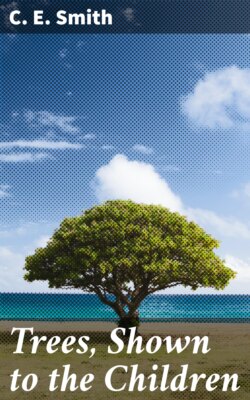Читать книгу Trees, Shown to the Children - C. E. Smith - Страница 16
На сайте Литреса книга снята с продажи.
ОглавлениеPlate V
THE HORNBEAM
1. Hornbeam2. Leaf Spray3. Stamen Catkin
4. Seed Catkin5. Fruit
If you look at an Alder tree in late autumn you will find three kinds of catkins. First, the empty seed catkins with dry woody scales; second, the dangling stamen catkins with the fine stamen dust all blown away; and third, there are tiny little caterpillar catkins with their scales still tightly closed together—these are next year’s stamen catkins (6) just begun to form.
The leaves (2) of the Alder are heavy and leathery. They are usually rounded at the tips, but sometimes they are square, as if a piece had been cut off. Each leaf is prettily toothed all round the edge, and the veins, which run from the centre rib to the margin, are very much raised. When the leaves are newly opened, the under-side is covered with tufts of soft down, and they are slightly sticky. Sometimes they are tinged with dull purple. These leaves are placed alternately on the stem, and while still in bud each leaf is enclosed in a pair of oval sheaths like small yellow ears. These ears do not fall off when the leaf unfolds, as do the leaf coverings of the Birch and the Beech; you will often find them at the bottom of the leaf stalk when the leaf is fully grown.
